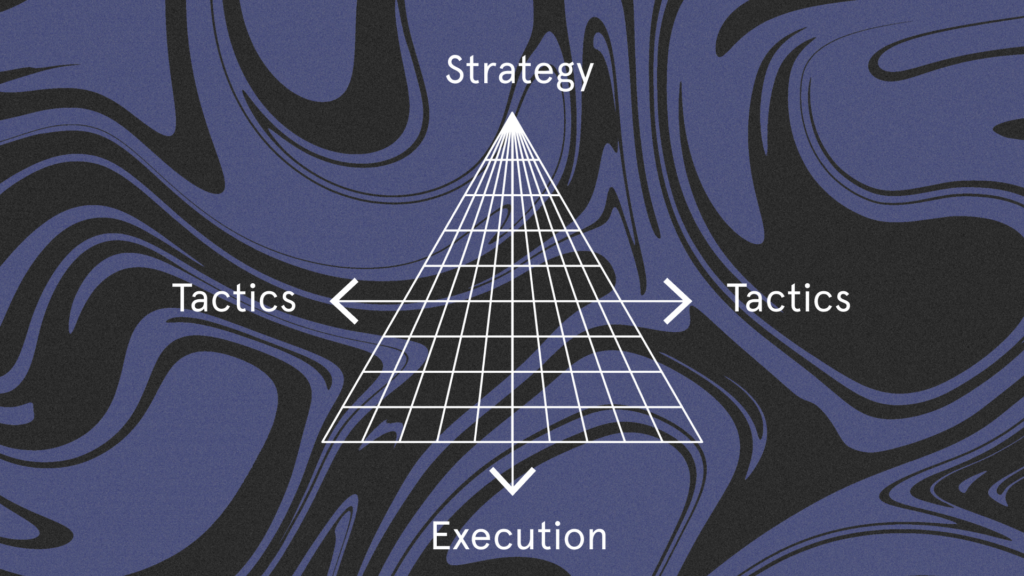by George Huff
In 2024, marketing organizations are in crisis…
No, I’m not forecasting a future of ad-free social media, or lamenting a marketing ecosystem without tracking cookies. There have already been millions of eloquent and insightful words written on both of those topics.
The crisis I’m exploring has gone mostly unheralded…despite the damage it does everyday.
Simply put: finding out exactly what’s going on in your marketing org is too hard – and painfully time-consuming.
In short, marketing alignment is missing – and not having it is disastrous for every layer of the organization.
At the end of last year, Forrester research reported that only 1% of marketing leaders had an aligned marketing organization – despite 89% saying having one was important for success. (Read the full research right here.)
From a personal lens, marketing alignment is the one topic that almost always comes up when I talk with marketing leaders.
Since I consider marketing alignment to be the most significant crisis facing the widest range of marketing organizations…that is the conversation I want to have, and that is the challenge we at Opal are solving.
In this blog, we’re defining marketing alignment, highlighting the harm that comes from its absence, exploring why this challenge hasn’t been solved – and previewing how we’re solving it!
How Opal Sees Alignment: Vertical & Horizontal

There are two forms of marketing alignment – and both are necessary for success. While you may not have heard these terms before, you certainly know both of these challenges.
Vertical: Aligning Marketing Strategy with Business Strategy
In short, vertical alignment is aligning marketing strategy and business strategy. This means that executive leaders can understand what teams are doing to further the business objectives – while the teams understand the “why” behind their tactics and tasks.
Let’s break it down…
The marketing function at an organization may be governed by different guiding philosophies and judged by different KPIs. Regardless of those differences – which are ultimately management preferences – the real goal of marketing is to drive business outcomes.
In order for the function to succeed in a meaningful way, aligning marketing strategy with business strategy is essential. When marketing and business strategy fall out of sync, the marketing organization will still be hard at work. They just won’t be working on what truly matters to the business – and that’s a problem.
Failing to align marketing strategy with business strategy is the most significant form of misalignment and the one that most undermines marketing leadership.
For executives experiencing this particular alignment challenge, there are countless layers of hierarchy and specialization that make finding answers a time-consuming slog.
On the flip side, finding out by asking questions is painful, it takes forever, and it disrupts a multitude of other people when they have to drop everything to help you learn what you need to know.
This type of marketing misalignment makes finding out if your teams are working on the right tactics challenging – and can limit leaders’ abilities to make decisions.
Horizontal: Stepping Out of Silos for Marketing Team Alignment
While failing to align business strategy with marketing strategy is perhaps the most significant way misalignment is experienced, it’s not the only one. The other common challenge is horizontal marketing team misalignment.
Horizontal alignment is the term for intra-organizational connection. Challenges around horizontal alignment come from specific teams, individuals, and functions all working in silos, completely disconnected from each other and the big-picture plans.
When an organization struggles with this type of horizontal marketing team alignment, no one can see how their marketing tactics compare to other teams, brands, and functions. This can lead to teams publishing radically different viewpoints that should be aligned – or having overlap in how their messages go to market. All of these limit the impact of marketing tactics, while creating a disconnected brand experience.
Ultimately, having horizontal marketing team alignment means that everyone in the organization works better – and often quicker – on the tactics that create a cohesive brand.
Our Mission: Delivering True Marketing Alignment

Both of these alignment challenges – horizontal and vertical – are compounded by the sheer scale of enterprise business. Consider that any enterprise org has countless initiatives – across teams, departments, and brands – running simultaneously. This makes it difficult for a leader looking to understand how marketing is executing on their objectives.
Of course, a lack of alignment also undermines the tactics of marketing managers – by leaving them flying blind in regards to what the rest of the organization is doing…
At Opal, this is the challenge we’re dedicated to solving. We believe that everyone deserves – and will work better – once they have true marketing alignment.
True marketing alignment means connecting tactical marketing initiatives and the strategic business outcome they support, while ensuring every team has the ability to understand how their individual tactics fit together.
How Different Levels Experience Marketing Misalignment
While failing to align marketing strategy with business strategy is an organizational challenge first and foremost, every layer of the organization experiences marketing misalignment in their own way…with their own pain points. The one thing that’s the same throughout, though, is that it disrupts what they can achieve.
Let’s now zoom in and explore it from the perspective of each layer:
Executives – Executives are the ones most disrupted by vertical misalignment. Their ability to make informed decisions hinges on their ability to understand how real tactics connect to conceptual strategies. When executives attempt to understand what’s going on, simple questions can waste a lot of their time and create fire-drills throughout the organization.
Managers – Caught between the two layers, lacking vertical alignment for managers means spending an outsized amount of time facilitating communication between the executives and the team members. Not only does this distract from their core responsibility of overseeing the tactical work, but managers can’t convey information as accurately as they would if they had crystal-clear alignment.
From the perspective of intra-team alignment, when teams work in silos, managers have to work much harder to avoid stepping on the toes of other teams or brands. In addition, they lose high-impact, cross-promotional opportunities simply by not understanding what other groups are doing.
Creators – Just like an executive needs to see down the pyramid to the tactics, team members need insight into the big-picture plans that inform their work. For them, vertical misalignment means they lack visibility into the why behind their on-the-ground tactics. Certainly, this undermines the connection they feel to their initiatives, but even more importantly, lacking that strategic context will weaken their output. Of course, when team members have the visibility provided by marketing team alignment, they are able to work with and draw inspiration from others in their organization.
Why Hasn’t Anyone Solved Alignment?

Since this problem is so widespread and clearly undermines the impact of even the best-intentioned marketing plans, the question is: why has no one solved it yet?
You would be right to wonder this! It’s 2024 – and there are 12,000-plus MarTech tools in the ecosystem – so why have so few organizations (per Forrester Research) solved for marketing alignment?
The are the 5 main reasons why:
Marketing teams are in a constant stress cycle – Marketing teams are often overloaded, barely able to keep their collective heads above water. This leads to them never working on how they work. In short, they don’t really have the time to solve their own problems.
Organizational altitude sickness – Enterprise marketing organizations are often composed of numerous small teams, each responsible for managing a specific marketing tactic. However, as one ascends through the organization, leaders stop wanting to look at tactics – and instead only want to discuss strategic plans and the impact on the business. Bridging this focus gap between strategy and tactics is crucial.
Human nature – Individuals are reluctant to operate within open systems where superiors can easily scrutinize their work. In addition, marketing is creative work that can often require an element of privacy to allow a person’s ideas to flourish. Consequently, people often resort to using private tools until they feel comfortable sharing their progress. (Fortunately, though, it’s possible to maintain privacy while fostering alignment…but not everyone knows that yet.)
Disconnected point systems – While alignment hasn’t been solved, it’s not because of a lack of MarTech tools. Diverse teams are using a wide range of tools – which makes getting on the same page harder. In fact, endless point systems that don’t talk together can be death-by-a-thousand-cuts for marketing alignment.
Generic tools fall flat – Marketing is inherently experience-driven, yet the generic tools commonly used to manage it fail to effectively integrate that creative experience. Truly specific tools are needed to showcase the experiential component of work to solve misalignment.
A Transformative Approach to the Modern Marketing Organization
Given what the research and the marketing leaders I work with, the desire to solve for marketing alignment is there.
However, the fact of the matter is that if alignment was going to sort itself out – or be solved with half measures – you wouldn’t have read (or skimmed) this far in a blog. Your challenges around misalignment would have been solved long ago.
Delivering true marketing alignment to an enterprise organization requires a commitment to transformative action and a new approach. In short, it comes down to a source of truth for your marketing. That means one platform that the entire marketing organization uses which connects strategy to execution.
Reintroducing Opal…Marketing’s New Source of Truth


